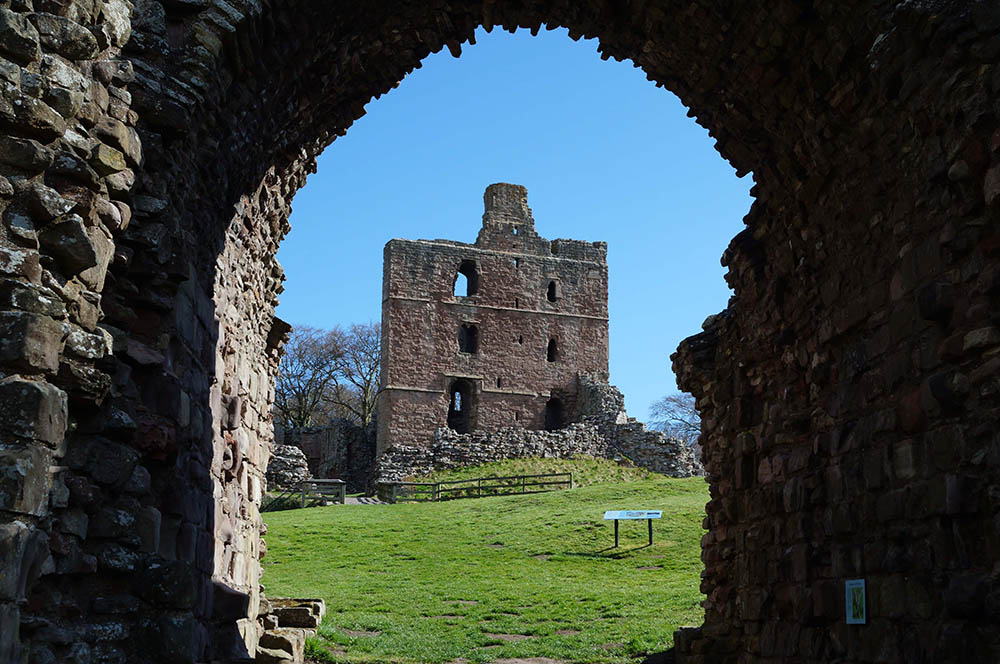
After the battle of Carham Lothian became finally and firmly under the influence of Malcolm II, King of Scots.
Owen, King of Strathclyde was heard of no more, and within a few decades the Kingdom of Strathclyde was subsumed under the influence of Malcolm II and the Kingdom of Scotland that we would recognise today came into being.
Thus, after the battle of Carham in 1018 the River Tweed became the de facto northern border of Northumbria where it remains today.
The de jure border was finally formalised in the Treaty of York in 1237. And today the Border follows the River Tweed as it has done since 1018 from Berwick to Carham where it takes a 30 mile dog leg to the south east along the Cheviot range before heading south and west again to the River Esk and Solway Firth north of Carlisle.
There have been a few minor changes along the Tweed, the main one being the Berwick changing hands on several occasions between England and Scotland.

In the 1100s there was a spate of castle building along the Tweed Border. Castles and towers were erected at Tweedmouth, Norham, Twizel, Cornhill, Wark, and on the Scottish side Roxbrugh.
The Border remains today largely as an administrative border. It is no longer a barrier to travel or trade, or to comradeship or commerce.
A 30 minute documentery film, 'Carham 1018 - The Start of the Border Story' is now available to view on The Battlefields Trust YouTube channel.
A shorter 7 minute documentery film, focusing on archeology at Carham has been produced, and is now available to view on The Battlefields Trust YouTube channel.
Please consider making a donation to Battlefields Trust North East to allow us to continue our work on the Carham 1018 Project.